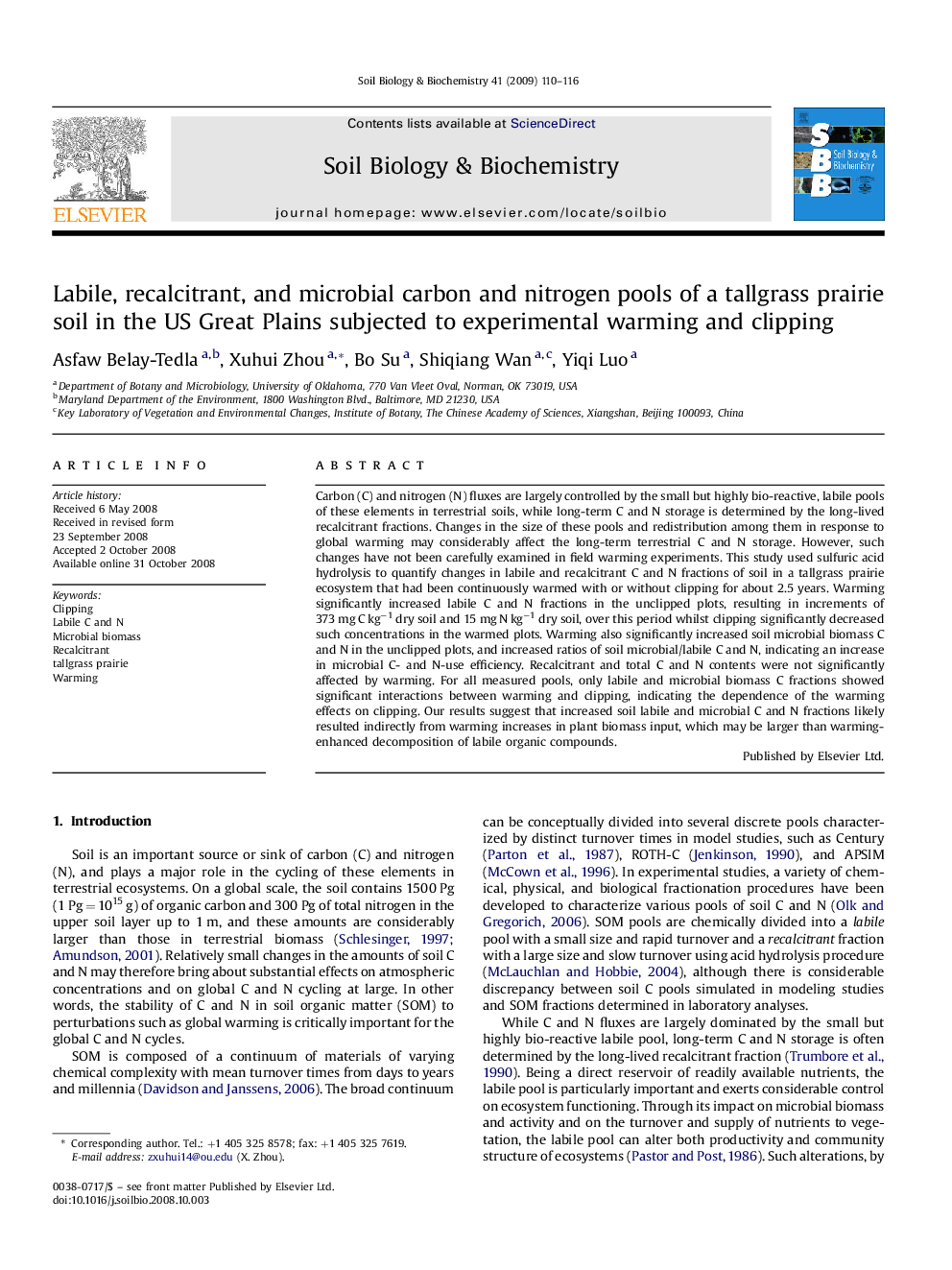| کد مقاله | کد نشریه | سال انتشار | مقاله انگلیسی | نسخه تمام متن |
|---|---|---|---|---|
| 2026815 | 1070043 | 2009 | 7 صفحه PDF | دانلود رایگان |

Carbon (C) and nitrogen (N) fluxes are largely controlled by the small but highly bio-reactive, labile pools of these elements in terrestrial soils, while long-term C and N storage is determined by the long-lived recalcitrant fractions. Changes in the size of these pools and redistribution among them in response to global warming may considerably affect the long-term terrestrial C and N storage. However, such changes have not been carefully examined in field warming experiments. This study used sulfuric acid hydrolysis to quantify changes in labile and recalcitrant C and N fractions of soil in a tallgrass prairie ecosystem that had been continuously warmed with or without clipping for about 2.5 years. Warming significantly increased labile C and N fractions in the unclipped plots, resulting in increments of 373 mg C kg−1 dry soil and 15 mg N kg−1 dry soil, over this period whilst clipping significantly decreased such concentrations in the warmed plots. Warming also significantly increased soil microbial biomass C and N in the unclipped plots, and increased ratios of soil microbial/labile C and N, indicating an increase in microbial C- and N-use efficiency. Recalcitrant and total C and N contents were not significantly affected by warming. For all measured pools, only labile and microbial biomass C fractions showed significant interactions between warming and clipping, indicating the dependence of the warming effects on clipping. Our results suggest that increased soil labile and microbial C and N fractions likely resulted indirectly from warming increases in plant biomass input, which may be larger than warming-enhanced decomposition of labile organic compounds.
Journal: Soil Biology and Biochemistry - Volume 41, Issue 1, January 2009, Pages 110–116